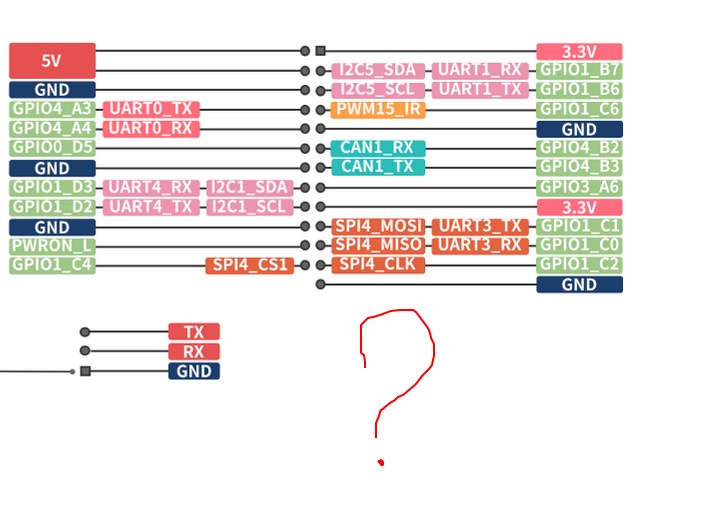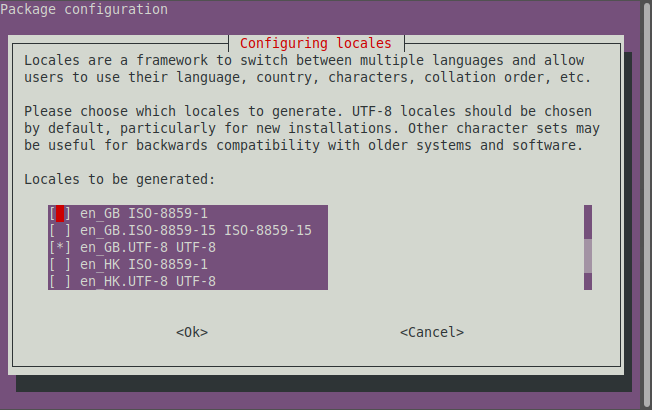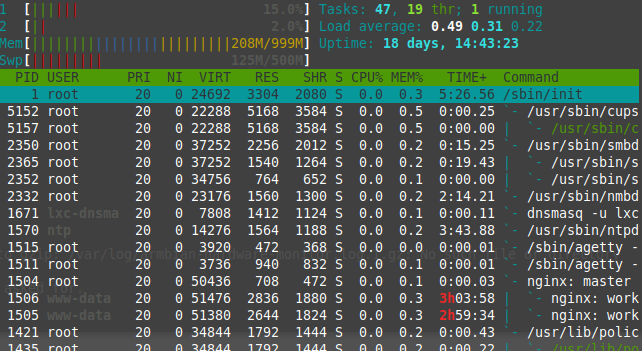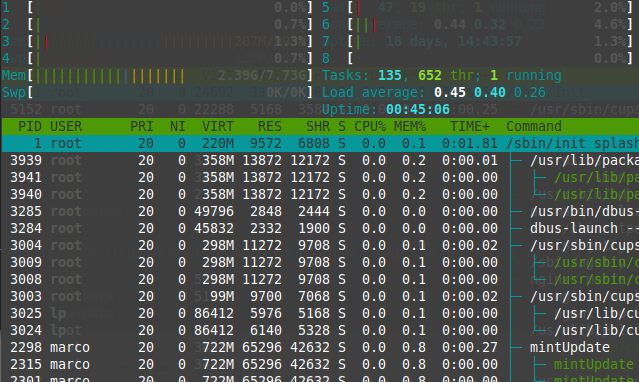
pazzoide
Members-
Posts
24 -
Joined
-
Last visited
Content Type
Forums
Store
Crowdfunding
Applications
Events
Raffles
Community Map
Everything posted by pazzoide
-
Hello, I installed lm-sensors on my Opi5 and I'm able to check temperatures, however I don't know how to make the little fan spin when the temperature rise. I know the temperature is not going to rise till critical levels, but I live in very hot country and I just don't want my device to become too hot. And do you know how to make the fan start at certain temperature rise? Also I'm not sure which pins I should connect the fan to.. One pin should be the 3.3V to get the power, what about the other one? I'm running Armbian 23.02.2 with kernel 5.10.110-rockchip-rk3588 Thanks in advance
-
May be you to change the bootloader on SPI and make it boot from SD
-
It does not, unfortunately if u mean 2.5" SSD. There should be enough room for the m.2 2242 (the short version, not the long one)
-
What if in the bootloader there could be an option to set the boot order, like in BIOS/uefi? Eg. 1St option is SSD 2nd is SD card (in case of 1St option fails) And so on Do you think this is this possible?
-
Hello, finally I have time to play with my OPI5, first thing I tried is to install on USB-C, but the port doesn't seem to work. Then I tried to install using USB3 port, on a ssd drive. The armbian-install utility seems to do the job and after installing the bootloader on mtdblock0 I powered off. At reboot everything is like before: if I remove the sd card the systen won't boot. If I boot with the sd card inserted the root partition is on /dev/mmcblk0p2 First thing that came into my mind is to mount SPI and check if bootloader is ok, but I'm unable to mount it: ~# mount /dev/mtdblock0 /mnt/spi mount: /mnt/spi: wrong fs type, bad option, bad superblock on /dev/mtdblock0, missing codepage or helper program, or other error. How can I debug the whole process?
-
I see. I'm not asking for anything, just trying to help. Unfortunately, I'm not skilled enough to help you with the code and, since testing is not needed, I will support the project donating, if this suites more your needs.
-
Hello, I've bought one, still waiting for its arrival. I'm not a big piece of dev, but I can help with tests and stuff
-
And the last question that came to my mind is: I have a second USB disk (3.5", powered externally) for backup. So even if USB to sata would provide enough power (or if I find a way to power the disk) and even if the whole system could be installed over USB to SATA, would the USB bus speed be divided between the two USB devices? I think so! That brings me back to a "pure" SATA interface or the performance would be slown down, since I have to backup terabytes of data to the second USB disk. For the question about HDD vs SSD right now I have an HDD running on the Banana but I'll switch to SSD. Do they have different power requirement?
-
I really have to thank you guys for the good answers. I'll study a bit to understand if those boards and those advises do fit my personal server environment. One question that comes to my mind about the usb to sata converter is that I won't be able to install the whole system on sata disk or will I, nowadays? Btw, hey, I do have a couple of these, but they do not have separate power supply, so I guess they won't receive enough power to run a 2.5" sata disk alone? Maybe some boards will. Anyway I'll make deeper researches about your suggestions, and if the usb3 to sata adapter works I don't see why to stick with the sata port actually
-
Hello, I'm planning to replace my old (but very good) Banana PI (the first model, it should be called M1 if I remember). I basically use it as my personal cloud server, for some remote daily backups and for messing things up Now I'd like to replace it with something newer and maybe I'll use the Banana just for experimental purpose. So I searched the internet but can't find something that really fits my needs, maybe somebody with more knowledge than me can give me an advice. It should have, at least: - SATA (which is a feature I can't find in many boards ) - Gigabit Ethernet (a must) - USB 3 (at least 1 port) - 1 GB of RAM (2 are better, more it's fine) - Dual core CPU or more (I don't know much in about CPUs/GPUs) the important thing is that it performs better than the Banana PI especially on single core workload, like for example compressing a big tar.gz. Thank you in advance
-
Hello, As far as I read, there are not many (<100$) arm64 board to run linux armbian, kodi, maybe plex, capable of playing without issues 4k videos. I think if I'd like to make tvbox the best choice in terms of video quality would be using android, right? Thing is I hate android, I love linux. Correct me if I'm wrong, but is there any good board around 50-80 $ to make a linux tv box? I'd just use it as an HTPC for playing video with a 4k tv attached to it and maybe some simple home media server. Thank you
-
I don't have a console terminal attached to the banana, so I can't check (it's not in my place, I only have ssh access to it). But If I ssh into the banana and then from the banana ssh to another server i see UTF htop, so I agree, it's just configuration. If I echo $LANG I get it_IT.UTF-8 in my desktop and en_US in the banana anyway somehow I solved the issue. After trying to reconfigure my locales there was a C.UTF-8 that was not selected in the list and that I previously ignored. But only selecting that as default locale everything kinda fixed. googling: C.utf8 = POSIX standards-compliant locale, extended to allow the basic use of UTF-8. No character upper-lower case relationships and collation orders defined beyond ASCII. Don't know if my EN.US.utf8 is corrupted, nothing happens if I try to regenerate it. I'll just stick with the C.utf8 (which works fine) still I was not able to understand the nature of the problem.... Thanks evrybody
-
I don't use putty , connecting from a linux ssh client. Anyway, this is may armbian-config and this my locale # locale LANG=en_US LANGUAGE= LC_CTYPE="en_US" LC_NUMERIC=it_IT.UTF-8 LC_TIME=it_IT.UTF-8 LC_COLLATE="en_US" LC_MONETARY=it_IT.UTF-8 LC_MESSAGES=en_US.UTF-8 LC_PAPER=it_IT.UTF-8 LC_NAME=it_IT.UTF-8 LC_ADDRESS=it_IT.UTF-8 LC_TELEPHONE=it_IT.UTF-8 LC_MEASUREMENT=it_IT.UTF-8 LC_IDENTIFICATION=it_IT.UTF-8 LC_ALL= It is already correctly configured with UTF-8. *** The problem is further being it an headless server, maybe in Zurich /ot *** I do: *** My version is the one that comes with armbian and I'd prefer to find the nature of the problem, instead. Also the banana htop version is newer then the desktop version, but seems older in ascii view. But if I have no other options I will change version. *** I found this github issue https://github.com/hishamhm/htop/issues/133 regarding a lib problem in compiling the software. Maybe it is compiled with --disable-unicode opt? Anyway, do any other users has this view in their htop with armbian or just my own has this ascii view?
-
That's the point! How can I revert it to use UTF-8 fonts so that it looks like the other screenshot?
-
Hello, I don't know if this is board related or probably armbian related... anyway. In my old banana pi (4.19.13-sunxi) htop (version 2.1.1) is like this: While on every other linux PC, server or whatever I have it looks like: The small and stupid difference is in those blue "tree view" lines (under the Command column), which I don't really like nor understand. Is there a way to set those lines as they normally should be? (and why was it set???) Thanks
-
Thank you, what I don't understand is where does this 500MB of zram space come from? It is not a chip on the board as of producer's specs http://www.lemaker.org/product-bananapi-specification.html It should not be part of the 1GB ram, since if I swapoff I can see the "Swp bar" (zram) dropping to 0 and filling the "Mem bar" with the missing MegaBytes. So where does it come from???
-
I can't figure it out... is zram written to disk like swap or is it written to ram memory?
-
Hi on my Banana PI I have set no swapfile/partition since I never gonna use swapspace ram is gonna be enough. When I reboot I always find 499MB of swap swapon -s Filename Type Size Used Priority /dev/zram1 partition 255728 67052 5 /dev/zram2 partition 255728 66836 5 But I can find no entry of /dev/zram1 nor /dev/zram2 in /etc/fstab. Can anybody explain me how is this possibile? And how to manage those partitions? I found another /dev/zram0 which I think has to deal with log2ram since it is mounted on /var/log, is this correct? Thanks
-

Banana Pi Samba performance testing - help
pazzoide replied to SenorSmartyPants's topic in Allwinner sunxi
I'm interested in this, can you be more specific? What are the options to adjust smb performance? -
Hello everybody, When I go apt update with my Banana PI (http://ix.io/1iAo) it hangs on apt.uk.armbian.com (since days!). Other apts work. Err:8 http://apt.uk.armbian.com xenial InRelease Could not connect to apt.uk.armbian.com:80 (51.140.55.58), connection timed out Reading package lists... Done Building dependency tree Reading state information... Done All packages are up to date. W: Failed to fetch http://apt.uk.armbian.com/dists/xenial/InRelease Could not connect to apt.uk.armbian.com:80 (51.140.55.58), connection timed out W: Some index files failed to download. They have been ignored, or old ones used instead. Is the apt mirror down? Should I change it? Is there another mirror we can use? Thanks
-
Thanks. The kernel required seems ok: info: reading kernel config from /proc/config.gz ... Generally Necessary: - cgroup hierarchy: properly mounted [/sys/fs/cgroup] - CONFIG_NAMESPACES: enabled - CONFIG_NET_NS: enabled - CONFIG_PID_NS: enabled - CONFIG_IPC_NS: enabled - CONFIG_UTS_NS: enabled - CONFIG_CGROUPS: enabled - CONFIG_CGROUP_CPUACCT: enabled - CONFIG_CGROUP_DEVICE: enabled - CONFIG_CGROUP_FREEZER: enabled - CONFIG_CGROUP_SCHED: enabled - CONFIG_CPUSETS: enabled - CONFIG_MEMCG: enabled - CONFIG_KEYS: enabled - CONFIG_VETH: enabled (as module) - CONFIG_BRIDGE: enabled (as module) - CONFIG_BRIDGE_NETFILTER: enabled (as module) - CONFIG_NF_NAT_IPV4: enabled (as module) - CONFIG_IP_NF_FILTER: enabled (as module) - CONFIG_IP_NF_TARGET_MASQUERADE: enabled (as module) - CONFIG_NETFILTER_XT_MATCH_ADDRTYPE: enabled (as module) - CONFIG_NETFILTER_XT_MATCH_CONNTRACK: enabled (as module) - CONFIG_NETFILTER_XT_MATCH_IPVS: enabled (as module) - CONFIG_IP_NF_NAT: enabled (as module) - CONFIG_NF_NAT: enabled (as module) - CONFIG_NF_NAT_NEEDED: enabled - CONFIG_POSIX_MQUEUE: enabled Optional Features: - CONFIG_USER_NS: enabled - CONFIG_SECCOMP: enabled - CONFIG_CGROUP_PIDS: enabled - CONFIG_MEMCG_SWAP: enabled - CONFIG_MEMCG_SWAP_ENABLED: missing (cgroup swap accounting is currently enabled) - CONFIG_BLK_CGROUP: enabled - CONFIG_BLK_DEV_THROTTLING: enabled - CONFIG_IOSCHED_CFQ: enabled - CONFIG_CFQ_GROUP_IOSCHED: enabled - CONFIG_CGROUP_PERF: enabled - CONFIG_CGROUP_HUGETLB: missing - CONFIG_NET_CLS_CGROUP: enabled (as module) - CONFIG_CGROUP_NET_PRIO: enabled - CONFIG_CFS_BANDWIDTH: enabled - CONFIG_FAIR_GROUP_SCHED: enabled - CONFIG_RT_GROUP_SCHED: enabled - CONFIG_IP_VS: enabled (as module) - CONFIG_IP_VS_NFCT: enabled - CONFIG_IP_VS_RR: enabled (as module) - CONFIG_EXT4_FS: enabled - CONFIG_EXT4_FS_POSIX_ACL: enabled - CONFIG_EXT4_FS_SECURITY: enabled - Network Drivers: - "overlay": - CONFIG_VXLAN: enabled (as module) Optional (for encrypted networks): - CONFIG_CRYPTO: enabled - CONFIG_CRYPTO_AEAD: enabled - CONFIG_CRYPTO_GCM: enabled (as module) - CONFIG_CRYPTO_SEQIV: enabled - CONFIG_CRYPTO_GHASH: enabled (as module) - CONFIG_XFRM: enabled - CONFIG_XFRM_USER: enabled (as module) - CONFIG_XFRM_ALGO: enabled (as module) - CONFIG_INET_ESP: enabled (as module) - CONFIG_INET_XFRM_MODE_TRANSPORT: enabled (as module) - "ipvlan": - CONFIG_IPVLAN: enabled (as module) - "macvlan": - CONFIG_MACVLAN: enabled (as module) - CONFIG_DUMMY: enabled (as module) - "ftp,tftp client in container": - CONFIG_NF_NAT_FTP: enabled (as module) - CONFIG_NF_CONNTRACK_FTP: enabled (as module) - CONFIG_NF_NAT_TFTP: enabled (as module) - CONFIG_NF_CONNTRACK_TFTP: enabled (as module) - Storage Drivers: - "aufs": - CONFIG_AUFS_FS: enabled (as module) - "btrfs": - CONFIG_BTRFS_FS: enabled - CONFIG_BTRFS_FS_POSIX_ACL: enabled - "devicemapper": - CONFIG_BLK_DEV_DM: enabled (as module) - CONFIG_DM_THIN_PROVISIONING: enabled (as module) - "overlay": - CONFIG_OVERLAY_FS: enabled (as module) - "zfs": - /dev/zfs: missing - zfs command: missing - zpool command: missing Limits: - /proc/sys/kernel/keys/root_maxkeys: 1000000 I will try armhf containers
-
Sorry for double posting. More info: Installation with curl -sSL get.docker.com | sh seems to be ok, but I get this error message when i run hello-world: standard_init_linux.go:178: exec user process caused "exec format error" This is my system: ARMBIAN 5.25 stable Ubuntu 16.04.2 LTS 4.9.12-sunxi
-
Hello, I've just switched from bananian to armbian (as many others here as I've seen), and successfully finished migrating everything. I use the Banana as a little home server, NAS, sane/cups printer sharer and home cloud. I want to use docker on it, but I'm finding some difficulties to make it run. I'm currently on 4.9.12-sunxi. I've tried installing docker from the ubuntu repo but it doesn't seem to work. I've seen some topics about building a custom kernel for this, is this necessary? Did someone managed to make docker run? Thanks.





